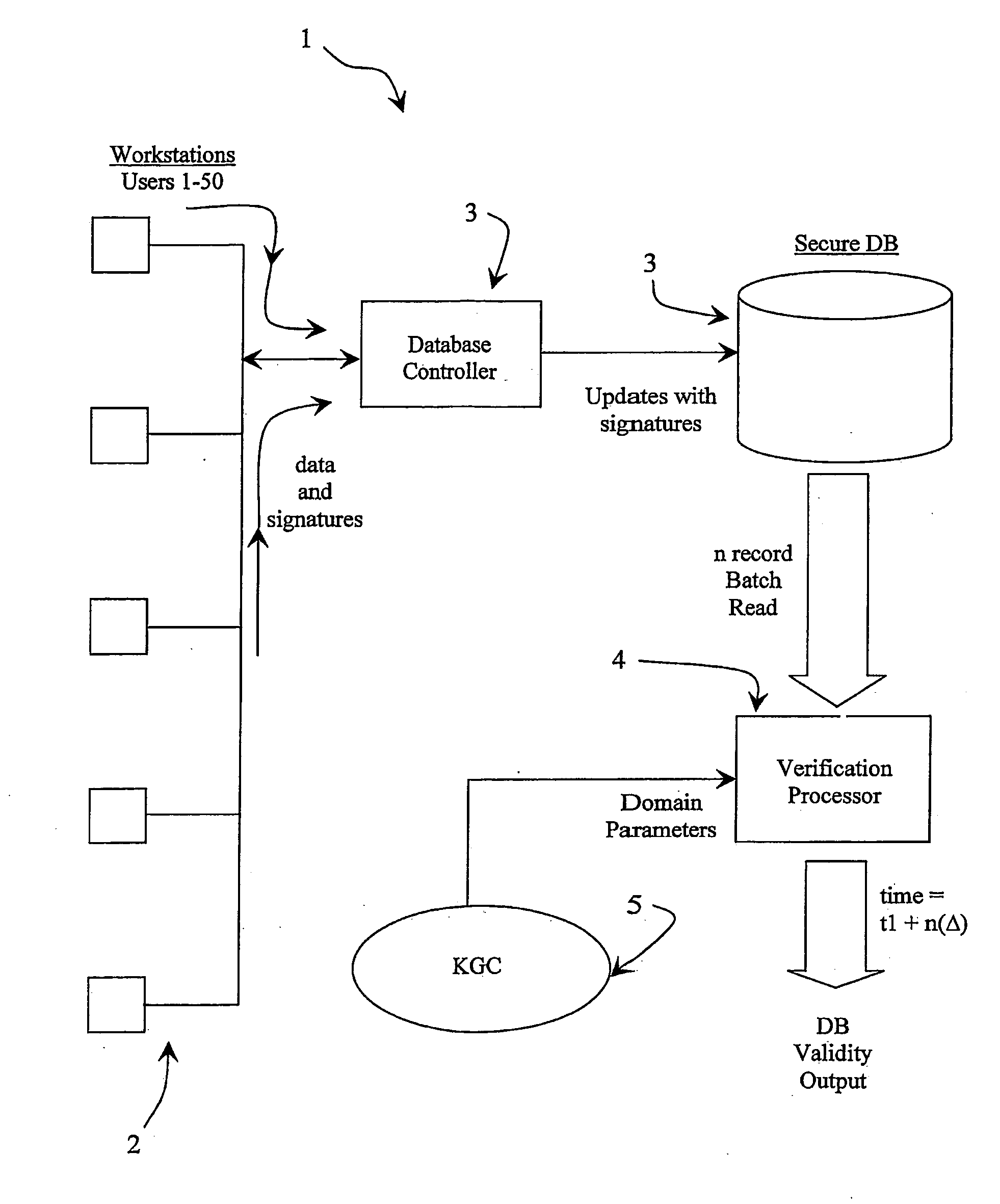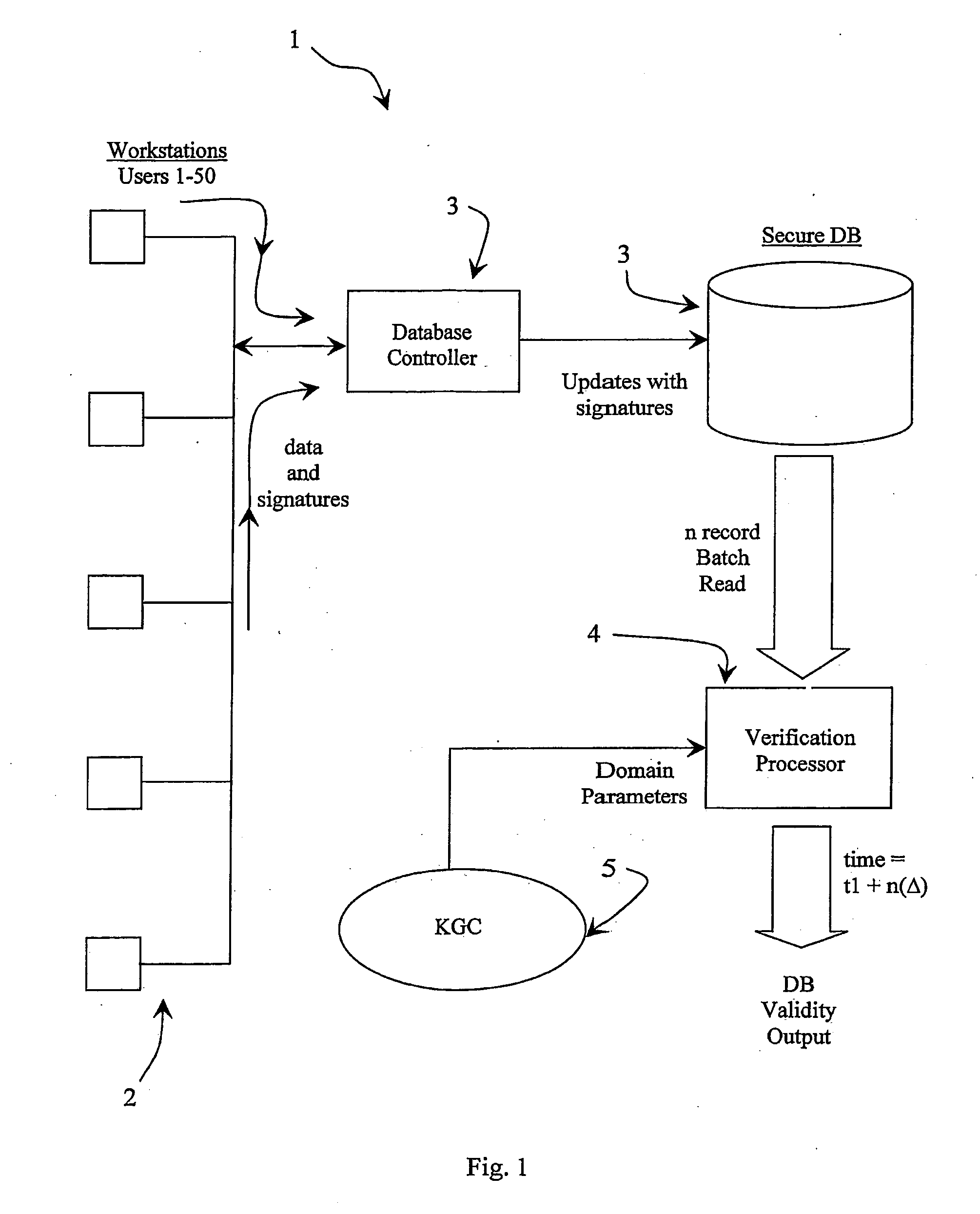Verification of identity based signatures
a cryptographic and identity-based technology, applied in the direction of user identity/authority verification, digital transmission, key distribution for secure communication, etc., can solve the problems of high computational cost, very tedious and time-consuming process, and the processing task of verifying an identity-based signature is very slow
- Summary
- Abstract
- Description
- Claims
- Application Information
AI Technical Summary
Problems solved by technology
Method used
Image
Examples
Embodiment Construction
[0046] Referring to FIG. 1 a database management system 1 comprises up to fifty or more workstations 2, each for a user. The environment may, for example, be a hospital and the system manages medical records in a secure manner. Each user has a private key issued by a KGC 5. A database controller 3 updates a secure database 3 with data and associated signatures generated by the user workstations 2. Thus every record of the secure database 3 has a signature to provide full traceability and non-repudiation of data edits / updates. It is important for the system 1 that the signatures are verified on a regular basis, say every hour. Such a task would be extremely processor-intensive if the database 3 is large. However this is performed by a verification processor 4 of the system 1 in a much shorter time than heretofore, t1+n(Δ), where t1 is the time for one verification, n is the number of signatures, and Δ is a time value which is a very small proportion of t1 (less than 1%).
[0047] In mo...
PUM
 Login to View More
Login to View More Abstract
Description
Claims
Application Information
 Login to View More
Login to View More - R&D
- Intellectual Property
- Life Sciences
- Materials
- Tech Scout
- Unparalleled Data Quality
- Higher Quality Content
- 60% Fewer Hallucinations
Browse by: Latest US Patents, China's latest patents, Technical Efficacy Thesaurus, Application Domain, Technology Topic, Popular Technical Reports.
© 2025 PatSnap. All rights reserved.Legal|Privacy policy|Modern Slavery Act Transparency Statement|Sitemap|About US| Contact US: help@patsnap.com



